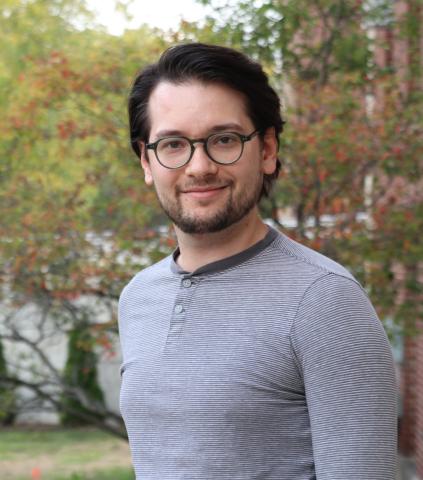
David Stanley’s interest in climate change led him to develop a program to improve how we gather data to study the inside of a cloud. The program simulated multiple satellites, collecting images of a cloud from many angles at the same time, which could help us to better understand what’s happening inside the cloud.
“Normally, we can only see the outside features of a cloud,” Stanley said. “Computed cloud tomography gets its name from computed tomography which is like a CT scan. Instead of X-rays, satellites take images of the cloud from as many angles and in as short a period of time as possible.”
Stanley said one of the unknowns in climate modeling is how much convective transport affects regrowth of new clouds. Convection is about the movement of heat and moisture in the atmosphere, especially up- and down-drafts in unstable conditions.
 “By generating multiple time passes on the center of the same cloud, you can see how the convection changes over time, how that is affecting the growth of other clouds in the future. And cloud growth can increase greenhouse effect.”
“By generating multiple time passes on the center of the same cloud, you can see how the convection changes over time, how that is affecting the growth of other clouds in the future. And cloud growth can increase greenhouse effect.”
Stanley said after completing his master’s degree in aerospace engineering at the University of Illinois Urbana-Champaign, he reapplied to continue for a Ph.D. at Illinois.
“I talked about my general interest in engineering and space engineering, but also how important it is for us to better understand climate change and work toward finding solutions,” he said. “Robyn Woollands saw that interest in me and asked me to join her research group. She connected me with Federico Rossi and Amir Rahmani in the Multi-Agent Autonomy Group at NASA’s Jet Propulsion Laboratory and they introduced me to JPL scientists Changrak Choi and Anthony Davis who are knowledgeable about cloud tomography, atmospheric clouds and aerosols. It aligned with some of my interests, and it was something Robyn was looking at as an interesting mission proposal – using multi-agent systems to support Earth science missions.”
Read more from Aerospace Engineering at Illinois.